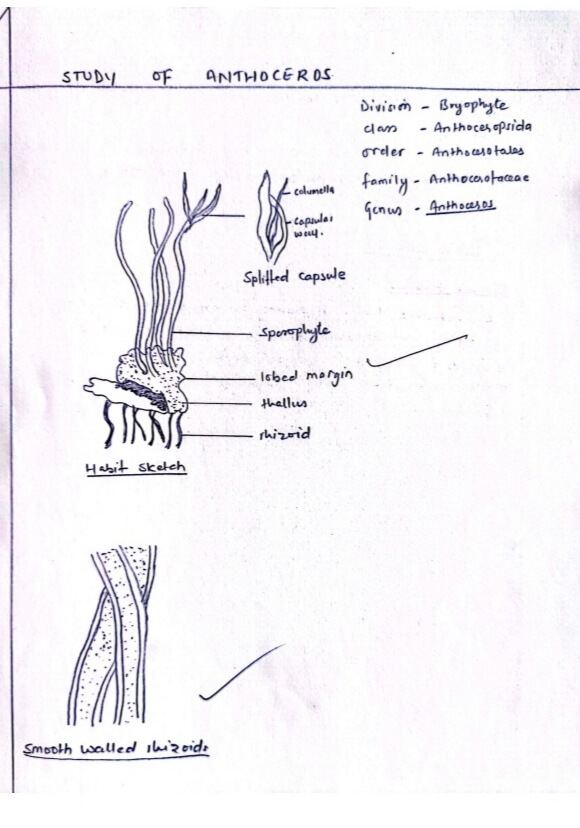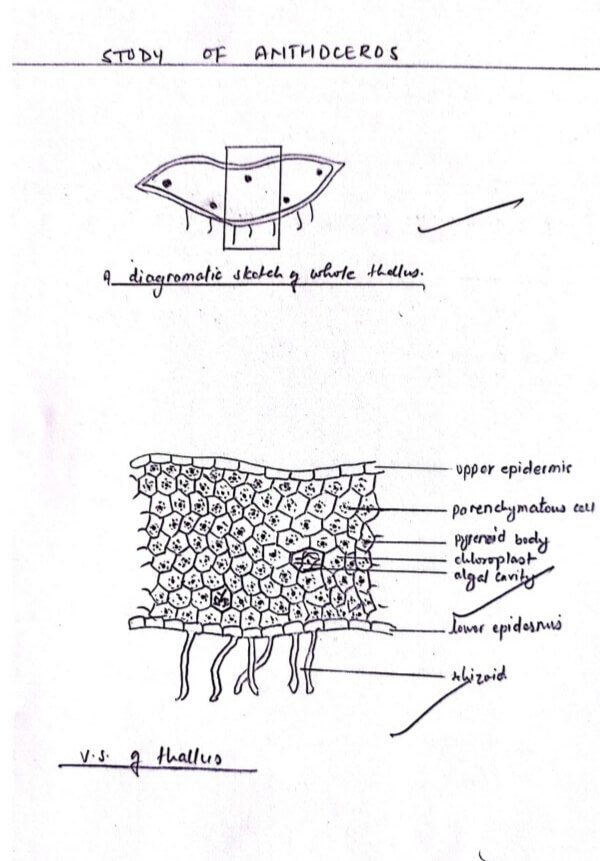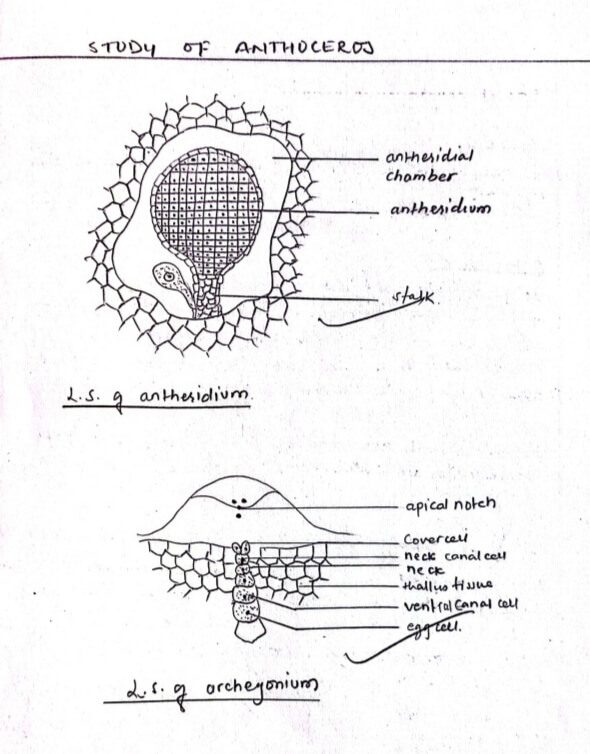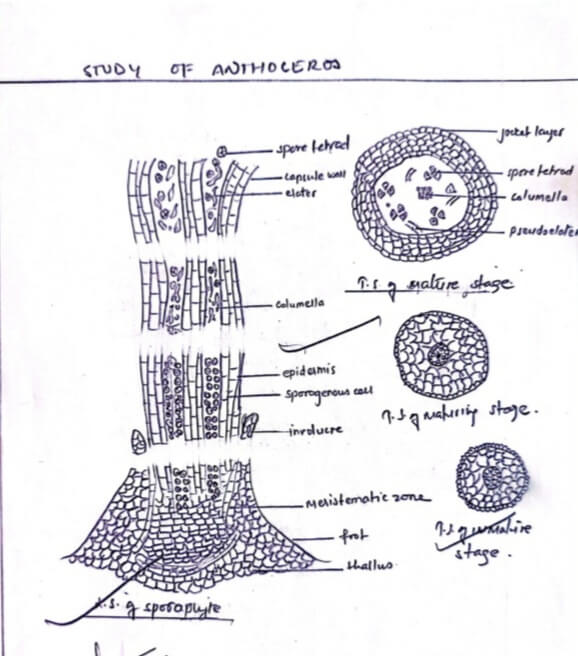COMMENT ON ANTHOCEROS
Habit
Shade loving:
Anthoceros is a moist and shade loving bryophyte mostly occurring on the bank of ditches, rocky crevices, and wet clay in hills in dense patches.
Vegetative structure
Simple thallus:
The vegetative thallus of the plant is very simple. It is long, thin, irregularly branched, dark green with lobed margin. It is dorsiventral with smooth dorsal surface without midrib. The ventral surfaces are marked by numerous smooth-walled rhizoids.

Internal structure of thallus
Algal Cavity:
The thallus is internally simple composed of mass of thin walled isodiametric parenchyma cells bounded by upper and lower epidermal layers. Each all contains a large single chloroplast with a central pyrenoid. The ventral surface of thallus encloses a few intercellular mucilaginous cavities filled with Nostoc or Anabaena like blue-green algae. They open outside by small pores at the ventral surface.

Sexual reproductive organs
i) Oogamous:
Anthoceros may be homo or heterothallic.The male and female reproductive organs lie embedded in the tissue of the dorsal surface just behind the apical point.
ii) Antheridium:
It is a male reproductive organ found singly or in group 1-4 enclosed within the single antheridial chamber. The mature antheridium is club-shaped supported by multicellular shark stalks. It is filled with a dorse number of antherozoids covered by a single layered peripheral jacket.
The antherozoids are spindle-like anteriorly biflagellate male reproduction units which are released by rupture of the jacket.
iii) Archegonium:
It is the female reproductive organ without Jacket but lies embedded directly on the thallus tussive. It is flask shaped with a clear neck and a venter. The neck consists of a neck canal cell and the center consists of a ventral canal cell and a prominent egg or oospore. The neck at its tip bears four cover cells. The archegonium is surrounded by a funnel shaped mound of mucilage which is the most conspicuous external feature.

Sporogonium of Sporophyte
The mature sporophyte is a prominent structure consisting of a bulbous foot of haustorial nature and erect Capsule or sporogonium above it. The foot embedded in thallus tissue, is of parenchymatous mass.
i) Capsule:
The capsule is black or brown, smooth, slender, cylindrical and arises from the thallus like a hornwort and project out to 2-4 cm, so nicknamed as hornwork. The base of the capsule is ensheathed by an involucre formed by the growth of gametophytic tissue.
ii) Seta:
There is no seta but the region between foot and capsule is occupied by a short Meristematic zone affecting the development of the capsule.
iii) Jacket:
It is covered by 4-6 layered thick parenchymatous jackets whose outermost layer is cutinized and interrupted by stomata.
iv) Columella:
The central portion is occupied by elongated sterile tissue, Columella.
v) Archesporial zone:
It is single layered towards fist but becomes double layered into spore mother cells.
vi) Spores:
It is spherical, uninucleated, double walled, inner thin and smooth and outer is thick and ornamented.

